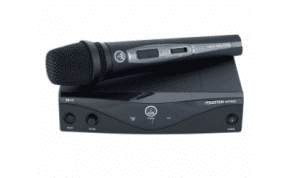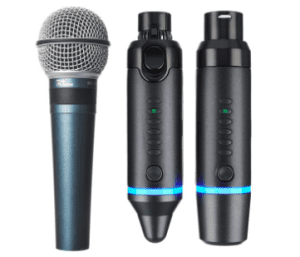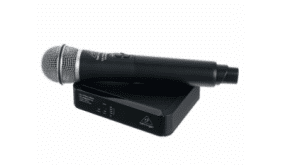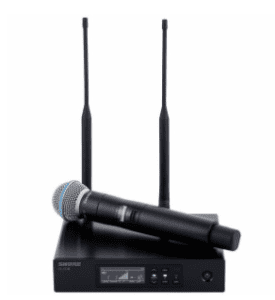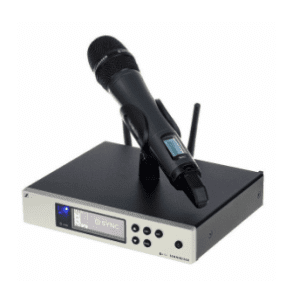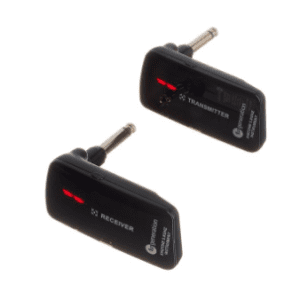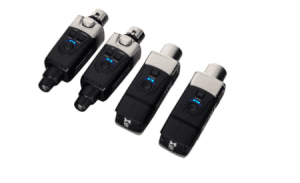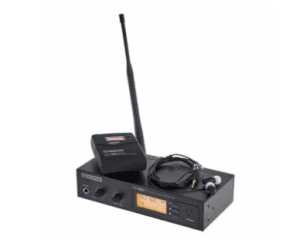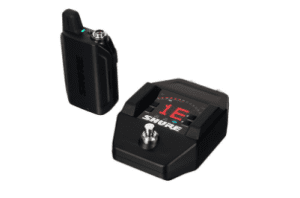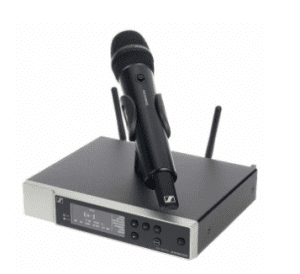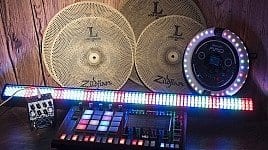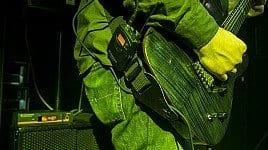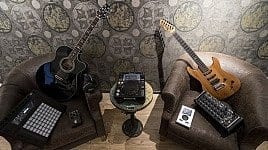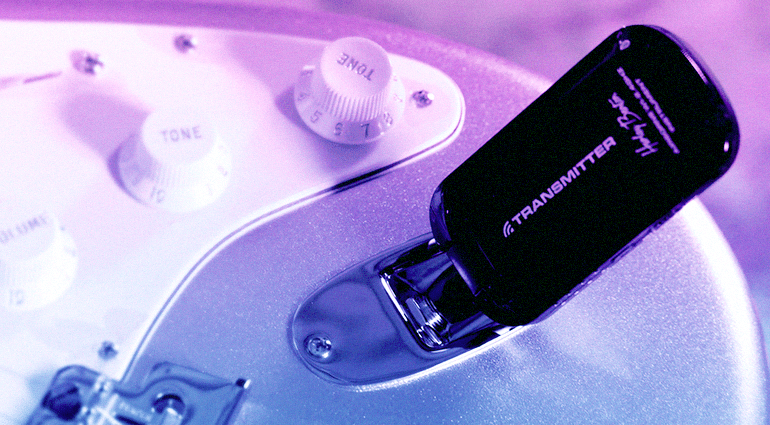
You want to go wireless with your instrument and wonder which equipment would fit your needs best? Look no further. We have put together this thorough gear list that lets you find what helps you best. Whatever feature is the most necessary for you: You can find a wireless item in our product overview that will meet your expectations.
How to go wireless
But before we get into the nitty-gritty gear stuff, you should take a minute and think about where and why you want to go wireless in the first place. There are so, so many products out there. That’s why a few thoughts and reflections will make it easier for you to find your perfect match when it comes to wireless equipment.
Ask yourself these questions:
- Which frequency band fits your needs best?
- How much range is necessary?
- How much operational safety do you need?
- Do you really need the features digital systems provide?
- How professional has your wireless system really to be?
- And of course, how much budget are you willing to spend?
In this blog article, we have you covered with answers to all of these questions. And furthermore, we are going to recommend go-to gear for each of these questions to you. So, read ahead and find your perfect match.
Frequency bands – a never-ending story
There are for several different frequency bands. Some of these bands can be used free of charge and without any registration by amateur musicians. Then there are such professional frequency bands that provide higher operational reliability and can be used without any fees as well. And last but not least, there are professional frequency bands that you have to register and pay a charge to use.
Amateur musicians oftentimes want a simple solution, that offers an easy plug-and-play operation and is free of charge. If you are a guitarist, and you are looking for a wireless system of that kind, you will be happy with the Harley Benton AirBorne 2.4 GHz Instrument. It won’t cost you any usage fee and is set up in no time. However, if you want to make sure that fewer interferences from other wireless will disturb your performance, you can choose the LD Systems U506 BPG. This wireless system uses a professional frequency band, but still is free of charge.
Range matters – gear for every need
Let’s be honest. At the end of the day, you are going to use your wireless system to get rid of annoying cable clutter and have freedom of movement – whether it’s on the stage, in the rehearsal room, or during a party performance. If you do not need to bridge too much distance, you can plug your wireless transmitter directly into your guitar with the guitar bug of the Boss WL-20 Wireless System. It offers a transmission of up to 15 meters and is one of the most sought-after devices. Do you want to use your wireless on club stages? Then you should give the Yuer TR-U1 Wireless System a try. It provides a maximum wireless distance of about 30 meters. More demanding musicians may want to check a solution like the the t.bone GigA Pro Body Set. This wireless system offers a massive transmission range of about 100 meters.
Diversity – double your safety
Whenever you play at locations with walls and ceilings that can reflect transmission waves, you might experience wireless interferences due to transmission waves that are reflecting from those surfaces. You can prevent such issues if you choose a wireless system that works in diversity or even true diversity mode. A wireless microphone system with diversity features, such as the AKG PW45 Vocal Set Band M, uses two antennas and receives one signal.
True diversity devices have two separate receivers and receives two signals. This way, it automatically can choose the better (read: stronger/more reliable) of both signals. The popular Sennheiser XSW 2-835 A-Band Vocal Set offers this feature.
Analogue vs. digital – decide for yourself
If you do not need too much wireless range, you can take digital wireless systems into consideration, that are suitable for smaller budgets. Singers may take a look at the the t.bone free2b / MB85 Beta Bundle, for instance. With a small to medium budget and the need for a few wireless meters more, the Behringer ULM300MIC might be your best bang for the buck. Professional singers who want to make sure their signal is optimally processed and safely encrypted, should give the Shure QLXD24/Beta58 K51 a try. You should be aware of its higher price level, though.
Professional features – do you need them?
Oftentimes, the operational reliability of a wireless system depends on its professional features. Some years ago, these features could only be found in expensive gear. But times have changed. And today, many affordable devices offer pilot tone, diversity, a battery level indicator, or a charging station for instance. Just take a look at the popular the t.bone freeU HT 823. It offers guitarists many pro-features at a very reasonable price point. If you are a guitarist or bass player and want to combine a large wireless range with high operational reliability, best sound quality, encryption and further top-notch specifics, you might want to go wireless with the Sennheiser ew 100 G4-865-S B-Band instead. But keep in mind that it is also a tad pricier.
Where else can you use wireless solutions?
You should also keep in mind that wireless transmission isn’t restricted to gigs with guitars and basses. The more wireless solutions your band uses, the more you keep your rehearsal room floor free of cables. And why not use a wireless system in the studio? If there are a few meters between your favorite recording position and your DAW’s audio interface, an easy solution such as the Fun Generation AirZone 5.8Ghz Instrument will do the trick. You can even get rid of your PA system’s cabling. Just try the XVive U3D Dual Wireless for PA/DJ to replace your speaker cables with a wireless connection. And if you would like to have more control over your monitoring signal and would like to have it pounding your eardrum without any distraction, a popular wireless in-ear system like the LD Systems MEI 1000 G2 will be a good choice. If you are a drummer and love to hear your click track without the hassle of cabling, there is a variety of wireless headphones you can choose from. Try the Audio-Technica ATH-M50 XBT2 for instance. These wireless closed back headphones are one of the most appreciated monitoring solutions.
Plug, pedal set, or stationary receiver – make your choice
If you don’t need too many options and features, a plug-and-play set of transmitter and receiver will be a reasonable choice. The Ibanez WS1 Wireless System is a candidate of that type. Guitarists who love to mute their transmission by foot and value features like an emulated cable sound, may check out the Shure GLXD16+. Many wireless microphone systems come with a stationary receiver. If you want to take your wireless system on tour or just make sure that it can be safely operated, transported, and stored, you might want to choose a wireless system with a rack-ready receiver, such as the Sennheiser ew-D 835-S Q1-6.
No matter which wireless system you choose, always remember: Have fun!
You are currently viewing a placeholder content from Facebook. To access the actual content, click the button below. Please note that doing so will share data with third-party providers.
More InformationYou are currently viewing a placeholder content from Instagram. To access the actual content, click the button below. Please note that doing so will share data with third-party providers.
More InformationYou are currently viewing a placeholder content from X. To access the actual content, click the button below. Please note that doing so will share data with third-party providers.
More Information




